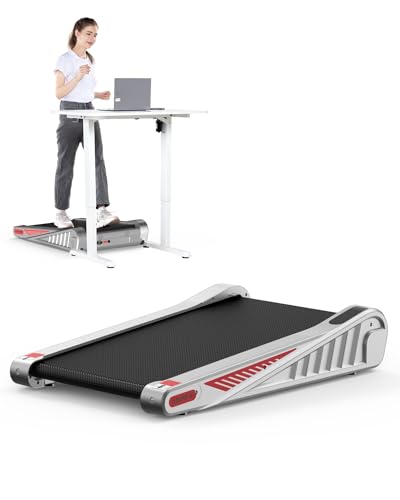Exploring Non-Motorized Treadmills: Benefits, Features, and Usage
In a period where physical fitness lovers are increasingly selecting environment-friendly and sustainable exercise equipment, non-motorized treadmills are gaining recognition. These treadmills offer a basic yet efficient way for users to engage in cardiovascular workout without counting on electric power. This short article explores the advantages, features, and factors to think about when acquiring a non-motorized treadmill, in addition to responses to regularly asked concerns.
Understanding Non-Motorized Treadmills
Unlike their motorized counterparts, non-motorized treadmills depend entirely on the user's physical effort to initiate movement. When a user strolls or works on the belt, the movement propels it forward. They are often referred to as 'manual treadmills' and are renowned for their density, minimalistic styles, and occupant-directed speed control.
Secret Features of Non-Motorized Treadmills
| Function | Description |
|---|---|
| Design | Streamlined, compact, and often foldable, non-motorized treadmills are designed for home use without needing a considerable footprint. |
| User-Controlled Speed | The user manages the speed by changing their pace, which enables a more customized exercise experience. |
| Resistance Levels | Lots of non-motorized treadmills come with adjustable resistance settings, allowing users to increase the intensity of their workouts. |
| Durability | Built with robust materials, many models assure durability and hold up against intense exercises. |
| Very little Maintenance | Without a motor, these treadmills require less maintenance and are less prone to technical issues. |
Advantages of Non-Motorized Treadmills
- Environmental Sustainability: As they run without electricity, non-motorized treadmills have a lowered environmental footprint.
- Cost-Effectiveness: Typically, these treadmills are more affordable than motorized alternatives, making them an affordable option for lots of.
- Greater Caloric Burn: Studies recommend users might burn more calories on non-motorized treadmills due to the extra effort required to keep movement.
- Greater Safety: Non-motorized treadmills often have a lower threat of falling due to their slower speed capabilities. Users can also concern a fast visit decreasing their speed.
- Enhanced Core Engagement: Many users report much better muscle engagement, particularly in the core, as maintaining balance and speed relies more heavily on the body's stabilizing musculature.
- Personalization of Workouts: The absence of a predetermined pace allows users to tweak their workouts, integrating walking, jogging, and sprinting modes depending on their fitness levels.
Comparison of Non-Motorized vs. Motorized Treadmills
| Feature | Non-Motorized Treadmills | Motorized Treadmills |
|---|---|---|
| Power Source | Manual | Electric |
| Cost | Usually lower | Typically higher |
| Maintenance | Low | Moderate to high |
| Running Experience | Managed by user effort | Pre-set speeds readily available |
| Mobility | Typically more portable | Usually bulkier |
Selecting the Right Non-Motorized Treadmill
When picking a non-motorized treadmill, there are several factors to think about:
- Space Availability: Ensure that you have appropriate space for the treadmill, thinking about both use and storage area.
- Weight Capacity: Check the maximum weight limit, particularly if multiple users will be utilizing the machine.
- Building Quality: Look for models made from durable materials to make sure longevity.
- Budget plan: Assess your budget while bearing in mind that purchasing a higher quality machine can lead to greater fulfillment and longevity.
- Extra Features: Some treadmills come geared up with additional features such as heart rate monitors, incline settings, and even Bluetooth connection.
Regularly Asked Questions (FAQ)
1. Can non-motorized treadmills really offer an excellent exercise?
Yes, non-motorized treadmills can offer an excellent cardiovascular exercise. Users can achieve their preferred intensity levels by changing their speed, which can result in more calories burned compared to utilizing a motorized treadmill at a stable rate.
2. Are non-motorized treadmills suitable for newbies?
Absolutely! They appropriate for all physical fitness levels. Newbies may find the manual speed control allows them to change their workouts gradually, constructing confidence and physical fitness over time.
3. Do non-motorized treadmills have weight limitations?
Yes, the majority of non-motorized treadmills have a defined weight capacity. It's important to inspect these limitations before buying to ensure the machine is ideal for the users.
4. Is it easier to operate on a non-motorized treadmill compared to a motorized one?
Running on a non-motorized treadmill can feel more difficult since you are entirely responsible for maintaining speed and momentum. This enables improved engagement of leg muscles and burns more calories.
5. Just how much upkeep do non-motorized treadmills require?
Non-motorized treadmills need less upkeep than motorized models, though users should regularly examine the machine for wear and tear and keep the running surface area clean.
Non-motorized treadmills represent an exceptional investment for individuals seeking sustainable, reliable, and versatile physical fitness options. The advantages and features they offer, together with their affordability and ease of usage, make them suitable for a large range of fitness enthusiasts. By comprehending their significance and performance, people can make educated decisions about integrating non-motorized treadmills into their fitness routines, enhancing their general health and wellness. Whether at Home Treadmills or in the health club, non-motorized treadmills can rejuvenate a person's approach to cardiovascular exercise and add to a healthier lifestyle.

